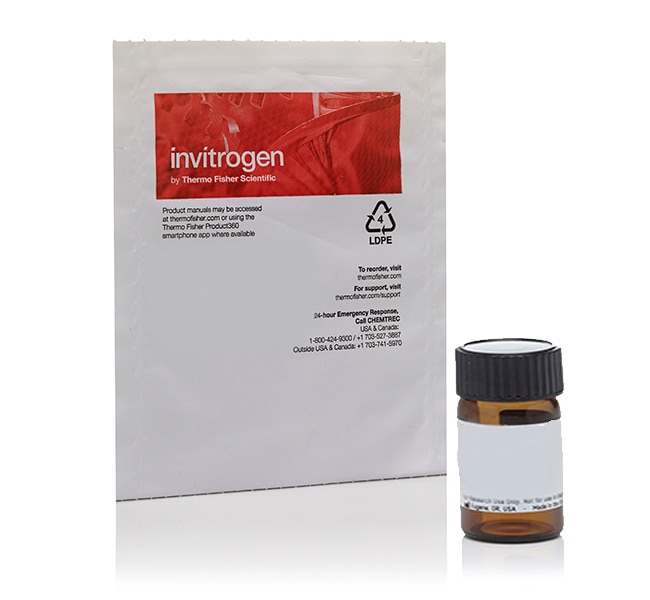Search Thermo Fisher Scientific

Invitrogen™
Dil Stain (1,1'-Dioctadecyl-3,3,3',3'-Tetramethylindocarbocyanine Perchlorate ('DiI'; DiIC18(3)))
DiI is a lipophilic membrane stain that diffuses laterally to stain the entire cell. It is weakly fluorescent until incorporated深入閱讀
| 產品號碼 | Quantity |
|---|---|
| D3911 | 25 mg |
| D282 | 100 mg |
產品號碼 D3911
價格 (TWD)
10,080.00
Online offer
Ends: 30-Sep-2025
14,400.00您節省 4,320.00 (30%)
Each
Quantity:
25 mg
價格 (TWD)
10,080.00
Online offer
Ends: 30-Sep-2025
14,400.00您節省 4,320.00 (30%)
Each
DiI is a lipophilic membrane stain that diffuses laterally to stain the entire cell. It is weakly fluorescent until incorporated into membranes. This orange/red-fluorescent dye, which is spectrally similar to tetramethylrhodamine, is often used as a long-term tracer for neuronal and other cells. DiI is also available as a solution (Cat. No. V-22885), as a paste (Cat. No. N-22880) or as a solid (Cat. No. D-282).
Prepare stock solutions of lipophilic tracers in dimethyl formamide (DMF), dimethylsulfoxide (DMSO), or ethanol at 1 to 2.5 mg/mL.
For Research Use Only. Not for use in diagnostic procedures.
規格
ColorYellow
Detection MethodFluorescence
Emission565 nm
Excitation Wavelength Range549 nm
For Use With (Equipment)Fluorescence Microscope
Molecular Weight (g/mol)933.88
Quantity25 mg
Shipping ConditionRoom Temperature
Product TypeLiphophilic Tracer
SubCellular LocalizationCell Membranes, Lipids
Unit SizeEach
內容物與存放
Store at room temperature and protect from light.
Have questions about this product? Ask our AI assisted search.
This is an AI-powered search and may not always get things right. You can help us make it better with a thumbs up or down on individual answers or by selecting the “Give feedback" button. Your search history and customer login information may be retained by Thermo Fisher and processed in accordance with our
Privacy Notice.